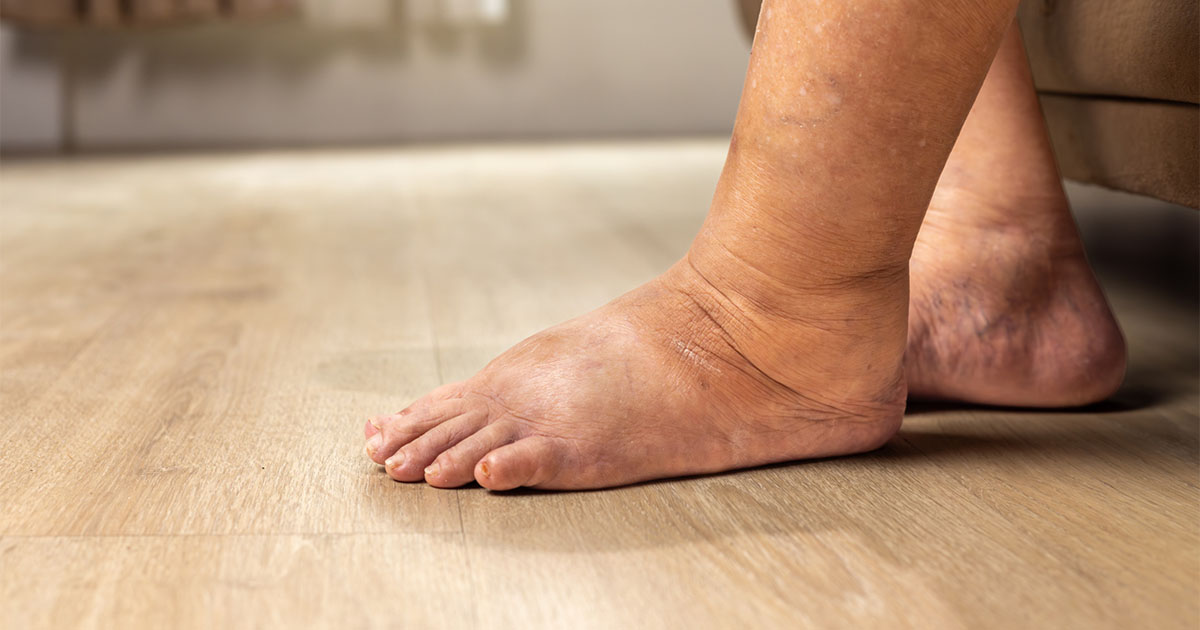At any one time, up to 15% of people in English and Welsh hospital beds have diabetes, accounting for more than 12 000 people on the day of the National Diabetes Inpatient Audit (National Diabetes Inpatient Audit [NaDIA], 2011). Nearly 85% of these had been admitted as an emergency, compared with approximately 81% of all hospital admissions. The vast majority of patients were not admitted because of their diabetes; two-thirds (66.6%) were admitted for a medical problem and only 9% were admitted specifically for management of their diabetes. Where diabetes was the main reason for admission, 47% were admitted because of active foot disease.
Diabetes inpatient care is expensive and impacts on the individual and the NHS. Between £2.3 billion and £2.5 billion is spent on diabetes care annually and at least £600 million of this is excess when compared with those of the same age group admitted to hospital without diabetes (Kerr, 2011). The NaDIA results found that inpatients with diabetes admitted as an emergency stayed an extra 2 days compared with those who had a planned admission. The median length of stay overall for inpatients with diabetes was 3 days longer than those without. This is mirrored in other existing studies (8 days versus 5 days) and demonstrates that this disparity has not changed over time (Davies et al, 2001; Sampson, 2007).
The National Information Centre Diabetes Audit Team published two reports in 2012, after investigating data relating to over 2.15 million people with diabetes. The first, which reviewed care processes and treatment targets (NDA, 2012a), focused predominantly on the level of care and surveillance carried out in primary care and achievement of HbA1c targets. It found that treatment targets for glucose and blood pressure control were less likely to be achieved in people with type 1 diabetes than people with type 2 diabetes. When combined with the longer average duration of diabetes, this predicts higher levels of future complications for people with type 1 diabetes, which, in turn, impacts on the need for specialist treatment at some stage in the individual’s life. Younger people (those under 55 years of age) with either type 1 or type 2 diabetes were less likely than older age groups to have completed all their annual checks or achieved their treatment targets. This represented one quarter of people audited and led to concerns that this would be a predictor of poor outcomes and future complications in this group of individuals.
The second report (NDA, 2012b) focused on complications and mortality. It investigated the prevalence of cardiovascular complications – many of which would require hospital admission, such as angina, myocardial infarction (MI), heart failure, stroke – and serious kidney disease (as measured by the uptake of renal replacement therapy), foot disease including minor amputation, major amputation, diabetic ketoacidosis (DKA), and retinopathy. This audit revealed that diabetes was responsible for 22 200 additional deaths in England and 1920 additional deaths in Wales in 2010–2011 (NDA, 2012b).
These reports, along with the Commissioning Outcomes Framework and National Quality Diabetes Standards (NICE, 2011; NICE, 2012) provide the foundation for clinical commissioning groups (CCGs) and challenge healthcare providers and clinicians to review clinical processes and access to patient-centred and peer-reviewed structured education, in order to reduce variations in care and hospital admissions.
Diabetes emergencies are more often than not preventable. This article focuses on the more common clinical emergencies, including DKA and hyperosmolar hyperglycaemic state (HHS), hypoglycaemia, the diabetic foot and the care of newly diagnosed children with diabetes. Each section contains case reports that align theories and recommendations for good practice.
Diabetic ketoacidosis (DKA) and hyperosmolar hyperglycaemic state (HHS)
DKA occurs mainly in people with type 1 diabetes but can occasionally present in people known to have type 2 diabetes. HHS is a condition that affects only people with type 2 diabetes. Both conditions are life-threatening. They are caused by a complete or relative lack of insulin and require emergency hospital admission. The rate of mortality in people with DKA has reduced over a 20-year period from 7.96% to 0.67% (Lin et al, 2005). Another study from Wang et al (2006) demonstrated that deaths due to hyperglycaemic crisis overall in the US amount to close to 5% for DKA and 10–15% for HHS. The rate of mortality in people with HHS remains high at 10–15%. The prognosis in both conditions is substantially worsened at the extremes of age and in the presence of coma and hypotension (Hansen and Møller, 2010). There is an ongoing rise in rates of DKA in the UK, with 8472 people admitted to hospital at least once for this complication during 2010–2011. Clinical services and commissioners are tasked to investigate new approaches to reverse this trend and reduce admissions to hospital.
DKA
Diagnosis of DKA can be difficult and patients may be defined as having DKA but may simply be hyperglycaemic. Case report 1 (Box 1) shows a case of recurrent attendance in an acute medical unit, and demonstrates how staff education can prevent admission or frequent attendance for the treatment of hyperglycaemia.
Precipitating factors for DKA include infection, intercurrent illness, post-surgery, and omission of insulin. People with DKA tend to be younger and there is a link to socioeconomic, psychosocial and educational factors contributing to poor compliance to insulin therapies (Randall et al, 2011). Diagnosis is dependent on three components: uncontrolled hyperglycaemia, ketonaemia and acidaemia (NHS Diabetes, 2010). Successful treatment has traditionally focused on frequent monitoring, correction of hypervolaemia and “hyperglycaemia”, correction of electrolyte losses, and investigation for the precipitating cause. However, recent national guidelines recommend that, rather than focusing on hyperglycaemia, the reduction in ketones is a more effective measure of success. Readmission rates for DKA, however, are high with an average of 31% of patients readmitted with DKA within a year of their initial admission (Joint British Diabetes Societies Inpatient Care Group, 2010).
The majority of cases occur in people with a known history of diabetes and should be largely preventable through early detection, and by the education of patients and healthcare professionals. The NICE quality standards (NICE, 2011) emphasise the important part that structured education for people with diabetes plays in enabling people to manage their own diabetes, and that if admitted for DKA, recommends that they receive educational and psychological support prior to discharge. In practice, access to psychological support is limited in the UK so healthcare professionals need to ensure that patients know how to prevent reoccurrence and readmission following an event. During periods of intercurrent illness in people with diabetes, prevention of DKA can play a major part in reducing admissions to hospital. Recently, TREND-UK formed an expert working group representative of all the major professional organisations in the UK, to formulate guidance and ensure consistency in advice given around managing intercurrent illness. (This document, entitled “Managing diabetes during intercurrent illness in the community”, will be available via www.trend-uk.org). In general, regarding suspected DKA, the “rule of thumb” is that children or pregnant women, or any patient who is unable to keep fluids down, should always be admitted to hospital as an emergency.
HHS
This condition is often the result of poorly treated type 2 diabetes or delayed diagnosis of type 2 diabetes. Affected patients are usually frail, with altered levels of consciousness, severely dehydrated and clinically very unwell. Infection or cardiovascular events are the most common predisposing factors. Strict differentiation between HHS and DKA is often difficult as some patients with HHS may present with ketones. The onset of symptoms with HHS is very slow whereas symptoms of DKA occur rapidly (Table 1) and the presenting blood glucose readings are often the key sign as readings can be 35–40 mmol/L or more. This, combined with a calculated serum osmolality of >320 mOsm/kg, is diagnostic. Treatment of HHS usually follows the principles of those for DKA: rehydration, correction of hyperosmolality, electrolyte imbalance and hyperglycaemia. These individuals are usually more sensitive to insulin (Joint British Diabetes Societies Inpatient Care Group, 2012).
Sick day education given through structured education programmes at the diagnosis of diabetes and reinforced at annual review may play a part in reducing occurrences of HHS or DKA.
Hypoglycaemia
Hypoglycaemia is the most common diabetes-related reason for ambulance call-out and is associated with increased morbidity and mortality (Brackenridge et al, 2006). It is estimated that there are 70 000–100 000 emergency call-outs for hypoglycaemia per year (NHS Diabetes, 2012a). These events are expensive and it is estimated that ambulance call-outs cost the NHS £13.6 million per year (Farmer et al, 2012). Each admission to hospital because of hypoglycaemia costs the NHS about £1000 (Amiel et al, 2008). People with diabetes fear hypoglycaemia, which can impact on adherence to medication and agreed glycaemic targets (Wild et al, 2007).
CCGs are tasked with reducing the number of people with diabetes requiring medical attention as a result of a hypoglycaemic episode, and with reducing the rate of recurrence of an episode of hypoglycaemia requiring medical attention over 12 months (NICE, 2011). If commissioners are to meet this requirement, patient and staff education will play a major part, along with innovative commissioning processes.
National guidance regarding hypoglycaemia is readily available for hospital and community staff and includes algorithms and care pathways (NHS Diabetes, 2010; TREND-UK, 2011). Other easily accessible online training on hypoglycaemia for staff and patients is included in a suite of e-learning modules (NHS Diabetes, 2012b). New innovative ways of reducing admissions are being implemented across the UK; case study 2 (Box 2) describes a pilot study being undertaken in Leicestershire aimed at reducing repeated episodes of hypoglycaemia and enabling people living with diabetes to prevent and manage hypoglycaemic episodes.
The diabetic foot
Around one in 20 people with diabetes will develop a foot ulcer in 1 year and diabetes is the most common cause of lower limb amputations. There are 70 amputations a week, of which 80% are potentially preventable. Despite this, in 2007 and 2008, nearly a quarter (23%) of people did not have a foot check. Up to 80% of people will die within 5 years of having an amputation as a result of diabetes, which is greater than colon cancer (49%), prostate cancer (20%) or breast cancer (17%; Diabetes UK, 2012a). The NaDIA 2011 figures found that 47% of people who had been admitted as an emergency were admitted as a result of foot ulceration and that 2.2% of other admissions developed a foot ulcer during admission. In terms of costs, diabetic foot care is estimated to be 20% of the total diabetes budget, and it is estimated that between £600 million and nearly £700 million is spent each year on foot ulcers and amputations. People at highest risk of foot ulceration are those that have:
- A previous history of ulceration.
- Neuropathy or nerve damage.
- End stage renal disease.
- Vascular disease.
National initiatives such as the “Putting Feet First” Campaign and the development of the “National Minimum Skills Framework” (NHS Diabetes and Diabetes UK, 2011) required for the management of the diabetes are the gold standard of care and help to inform clinicians and commissioners of the foundation for good foot care in diabetes.
Prevention of foot disease and referral
If the incidence of diabetic foot disease is to reduce, there needs to be effective foot screening in place along with foot protection teams, care pathways and information for staff and people with diabetes that is given routinely and repeatedly. The development of a simple tool to identify if people with diabetes have reduced sensation and are at risk of foot ulceration is availably online for all to access (“Touch The Toes” test; Diabetes UK, 2012b). The “traffic light” referral system developed by Diabetes UK is easy to use and gives clear guidance on when to refer (Figure 2). Case study 3 (Box 3) demonstrates how, with effective care, neuropathic ulcers can be healed but that early referral is needed. Intravenous antibiotics can be given at home, and in the example provided in case 3, was more cost-effective than hospital admission and suitable for the needs of this woman with learning disabilities.
Children newly diagnosed with diabetes
There are around 29 000 people under the age of 17 with diabetes in England. Of these, 97% have type 1 diabetes, 1.5% have type 2 and 1.5% are recorded as “other” (Diabetes UK, 2012a). In type 1 diabetes in the UK this amounts to one in every 700–1000 people, and the peak age of diagnosis is 10–14 years. DKA is a common problem in children with diabetes, and the frequency of DKA at clinical onset of diabetes varies widely by geographical region from approximately 15% to 75%. Approximately 25% of children in the UK with newly diagnosed type 1 diabetes have DKA. Other reports estimate that 15.5% of children and young people have had one episode of DKA in the previous 5 years, and 10.4% of children and young people have had two or more episodes of DKA in the previous 5 years (The Health and Social Care Information Centre, 2011). The overall mortality rate in paediatric patients with DKA ranges between 0.15% and 0.3% (Lawrence, 2005).
There are approximately 10 deaths from DKA a year in the UK in children with diabetes (Ali et al, 2011). It is vital that clinicians are aware of the signs and symptoms of type 1 diabetes in children (Table 2). Symptoms in those under 2 years of age are more difficult to identify but will include lethargy, polydipsia and polyuria.
A marked elevation of the blood glucose level confirms the diagnosis. If ketones are present in blood or urine, treatment is urgent, and the child should be referred the same day to avoid the development of ketoacidosis. Insulin therapy should be instituted in most cases as soon as the diagnosis of diabetes is made, to prevent development of DKA.
A specialist team with expertise in diabetes and paediatrics should care for children with diabetes and their families. This should include the child and their family, a paediatrician, a DSN educator, a dietitian, a paediatric social worker and/or a psychologist or psychiatrist. Ongoing care encompasses structured education, links with nurseries, schools and colleges and community teams, assessment of growth and development and psychological support as well as the traditional markers for glycaemic control, treatment options and prevention of complications.
Case study 4 (Box 4) acknowledges the difficulty of diagnosis in some children and young people, when even the closest of relatives may not recognise that the individual is ill. General practitioners and practice nurses are the first point of contact and need to be vigilant and ask the right questions to ensure that a correct diagnosis is made, which was the case for “George” in the example provided.
Conclusions
Diabetes-specific emergencies requiring hospital admission are not common but they do, in general, require prompt diagnosis and treatment. It is important that healthcare professionals have the correct knowledge skills and competencies to recognise the different emergency situations, treatment and referral pathways, to support people living with diabetes.
Information for healthcare professionals and individuals living with diabetes is now freely available and accessible and should be offered to patients at diagnosis and at annual review. Structured education programmes can reinforce the message and enable attendees to recognise when they may need urgent assessment and assistance. Clinical management plans should be in place for all urgent and emergency care ensuring appropriate referral and assessment by the “right” healthcare professional, for the “right” individual at the “right” time.




